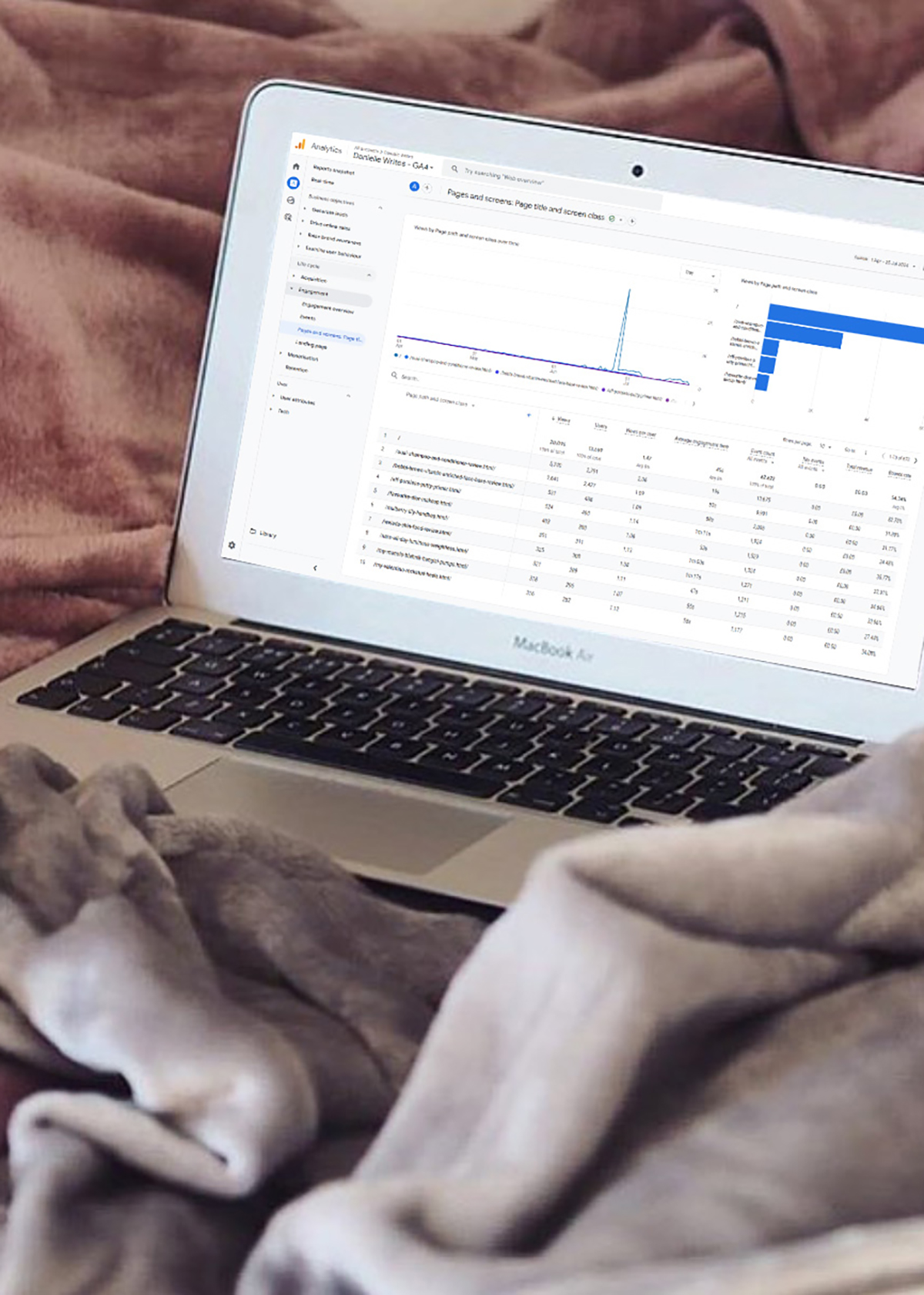If you are a blogger, I am sure that you will have heard of the term SEO. After working as the head of a marketing department for over 10 years, SEO pretty much rules my life. IF you are unaware of what SEO means, it is an acronym for ‘Search Engine Optimisation’. To describe this in its plainest form, SEO is what makes your website rank.
For example, if you have a post which ranks well for SEO, it may appear on the first page of Google. Which if we are all being honest, is where we want all of our posts to end up. However, after working in this realm for over a decade, I know how much of a minefield it can be. The goalposts are always moving. However, in this post I am going to share with you the basics of SEO.

Ensure that your text is a suitable length.
To kick off my basics of SEO, I am going to mention post length. However, please disregard this post which will be incredibly vast in comparison to my other posts. Generally, I like to keep my posts between 600 to 800 words. I have found the sweet spot to be around the 700-word mark. Even though a general rule for SEO is that the more words the better because the more scope you have to increase SEO. I find that with longer posts, there is a greater chance of giving people information overload and they end up clicking off before getting to the end. This will really depend on how you write and your target audience, but always ensure you have a good amount of content.
Check that your text is easily readable.
A step before optimising a post for SEO is to make sure that it reads well. During my tenure working in marketing, some people have writing for search engines down to a fine art. However, I like to write for people. Sometimes, those that write for search engines and with the intention to rank well, forget that a human is at the other side of a PC reading the post. I always try to write my posts from a very readable perspective. For me, the intention is to always write a post like I am chatting to a friend. Then, once I have the bones of my post together, I will proofread it and optimise it for SEO purposes. That is simply what works best for me.
Keyword analysis and placement.
One thing that you must do when learning the basics of SEO is to analyse your keywords. When you first think of a subject that you would like to write about, think about what keyword epitomises the post. For example, my keyword/key phrase for this post is ‘basics of SEO’. The reason why I picked that as my key phrase is because it is a term which people do search when they want to learn more about the subject. Plus, it is a term which I can organically add throughout my post so that it doesn’t appear too ‘overtly SEO’. Just think very generally about what people would be searching for.
Ensure that you optimise your text for SEO.
Next in the basics of SEO, you need to actually optimise your content for SEO purposes. The first stage of this is ensuring that your post is readable. Once you are confident with that, ensure that your posts are SEO rich. This includes things such as adding internal and external links, ensuring that you have your keywords throughout, meta information, text length, etc. A lot goes into it, but once you begin to do them, they become second nature to you. Now, I am unable to write a post without thinking about these things in my subconscious!
Use images and videos where possible.
A picture tells a thousand words, that is true even when it comes to SEO. Posts will rank much better if you have images and maybe even videos attached to your post. This really is one of the basics of SEO and something that I should listen to myself. I always try to add two or more images to my posts, but in reality, I am pretty bad at that. If you have the capacity, I would always recommend adding two or more to your posts. Not only does it look good, but it tells the search engines that you put time and effort into making the post as engaging for the reader as possible,
Ensure that you have meta information stored.
Throughout your posts, you need to ensure that you have meta information throughout. On the post itself, you should have a meta title and description. This is the information that will appear on Google when you search. Because of that, you need to make sure that you the text that you put in there is eye catching, engaging and packed with your keywords. As well as this, you need to have meta information on all images and videos throughout your page. It just helps to tie everything together. I know that on WordPress, you update this information under the SEO tab!
Cull old posts that are not performing.
If you have been blogging for as long as I have, there will be posts on your site that need to be laid to rest. A couple of years ago, I did an audit of every page on my site. Any pages that did not get views or were high bounce rate, I either amended or deleted. To be honest, this is something that I hate doing. All of my posts I put hell of a lot of effort into. I never want to delete my efforts from my page. However, I do this to rank high on the search engines. Which means that any dead weight, needs to be removed.
Check that you do not have broken links and bad redirects.
Next in my SEO basics post is to look for broken links and redirects. If you carry out my point mentioned above, about removing dead weight, you need to set up redirects. For example, if I delete this very blog post tomorrow and people try to click into the page via Google, they will get an error (normally a 404) page., That is not a good thing and it tell search engines such as Google that you don’t take your site seriously. If you delete a page, repoint it to either another post or just loop it back to your homepage.
Check the overall design of your site.
Something else to bear in mind when you are looking at your site is the design. I had my own lesson in this only last year. I worked with a company to develop a new theme for my blog. It cost me an eyewatering amount and it made my landing page home all important elements to myself. However, after looking at analytics in the coming weeks, things were on the decline. People were not staying on my site half as long and it raised a red flag for me. It turns out that even though my new site looked nice, it was not as easy for users to digest my content. To get to the information that they wanted, they had to scroll down lots of information. It simply wasn’t what the user wanted from my site and it caused my bounce and exit rate to increase.
I hope that you guys enjoyed learning about the basics of SEO. For me, with a marketing background, I could talk about this subject forever and a day. As I mentioned in the introduction, the goalposts are always moving. Just as you get your head around a certain aspect of SEO, something changes and you are back to square one. However, for as long as I have been optimising sites, these basics of SEO have always remained.
By doing these things across your site, you are guaranteed to see improvement over time. Another thing to note with SEO is that nothing is instant. To see results from your efforts, it can take months, many months. As always, I would love to hear from you guys on this. Do you think about SEO for your blog? Do you plan on improving your SEO?






